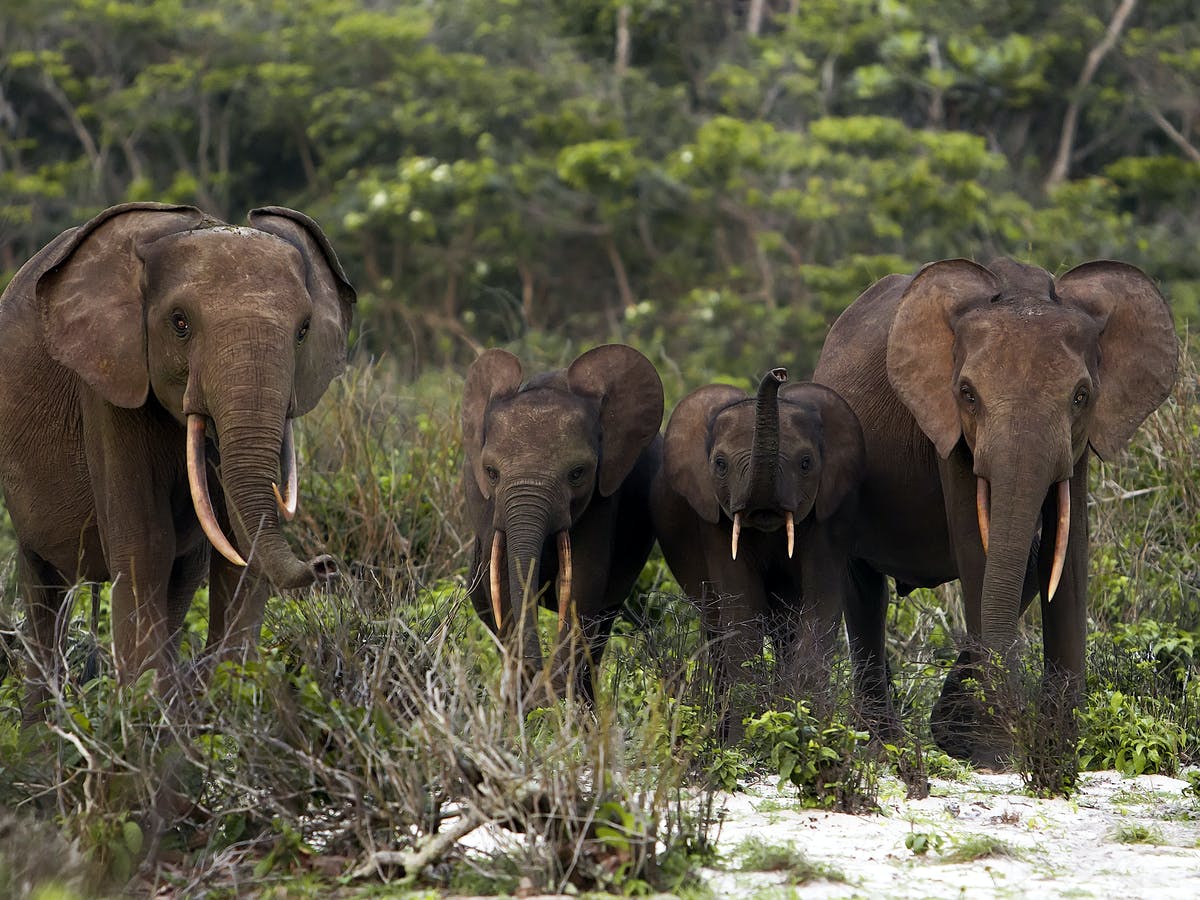African Forest Elephants: The Hidden Gentle Giants

In the west and central Africa hidden in the wooded rainforests lives an elusive and little-known animal of the wild. Even though this animal is one of the largest land animals alive today, the African Forest elephant was thought to be a subspecies of the African Bush elephant but scientists have recently realized the Forest elephant is different in many ways. More importantly, scientists have realized the African Forest elephant is incredibly important to the forest ecosystem and they are becoming more and more vulnerable.
African Forest Elephants or Loxodonta Cyclotis have several unique characteristics that separate them from the well-known African Bush elephant. Their name comes from their habitat. Instead of the savannas, Forest elephants inhabit rainforests in the west and central Africa. While both Savanna and Forest elephants sport the classic large physique of elephants, Forest elephants are smaller. Their ears are more oval-shaped than the African-shaped ears of Savanna elephants. Their tusks are the easiest to recognize physical differences. Forest elephants’ tusks point straight down versus the curved tusks that Savanna elephants sport. If you are close enough to examine an elephant’s foot, the most foolproof way to tell a forest elephant from a Savanna elephant is to count the number of toes. Both Savanna and Forest elephants have five toenails on their front feet but the Forest elephant has four toenails on his backfoot. This trait is something the Forest elephant has in common with the Asian elephant who also has four toenails on its back foot whereas the savanna elephant only has three on the back.

While all elephants are important, the Forest elephants are uniquely important to the world and the ecosystem because of the impact they have on the dense forests of Africa. Their survival is directly related to the germination of many rainforest trees. Many trees are only able to repopulate after passing through the digestive system of the Forest elephant. If the seeds do not pass through the elephants then the trees are not able to reproduce. They also disperse these seeds over more land areas than any other animal. On top of this crucial work for the already endangers rainforests, Forest elephants also ensure the survival of other animals in the forest that relies on them to clear paths that other animals use to get around the forest. All of these factors contribute to the growth and upkeep of the forests that are crucial in the stability of the Earth’s ecosystem and assist in attempting to climate global warming.

Even though these gentle giants are so critical in our world, they are threatened by a variety of factors that are contributing to lower their numbers. They are very elusive species and therefore it is difficult to track; which makes it even harder to assist them in keeping up their numbers. The Forest elephants also have a very slow reproductive rate. A female Forest elephant is pregnant for two years and after the birth of a calf, it cannot have become pregnant again for five to six years. Their reproductive rate is the slowest of all elephant species. They are also hunted by poachers even more than Savanna elephants because of the pink tinge their tusks have which makes them even more valuable ivory. Even though the Forest elephants support the dense forests of Africa, deforestation also is leading to a decline in their habitat which causes their numbers to decrease even more. In 2021, African Forest elephants were officially classified as Critically Endangered by the International Union for Conservation of Nature.

The African Forest elephant is a vital and beautiful part of our natural world. Very little is known about them and more information is needed to save them from disappearing entirely. These beautiful gentle giants and their savanna cousins still have a lot to contribute to the world and even more to teach us and we hope they can continue to do so.

If you would like to contribute to the conservation of the African Forest Elephants or if you would like to learn more about work being done to save them please see below sources used.
Sources:
African forest elephant. (2021, January 3). A-Z Animals. https://a-z-animals.com/animals/african-forest-elephant/
Forest elephant. (n.d.). World Wildlife Fund. https://www.worldwildlife.org/species/forest-elephant
The lesser-known forest elephant is crucial to its ecosystem. (n.d.). African Wildlife Foundation. https://www.awf.org/wildlife-conservation/forest-elephant
(2019, May 27). African Forest Elephant Foundation. https://forestelephants.org/








This is such a good read. I didn’t know about the differences in the Elephant 🐘 species. This is such an in-depth explanation and I am worried about the critical endangerment